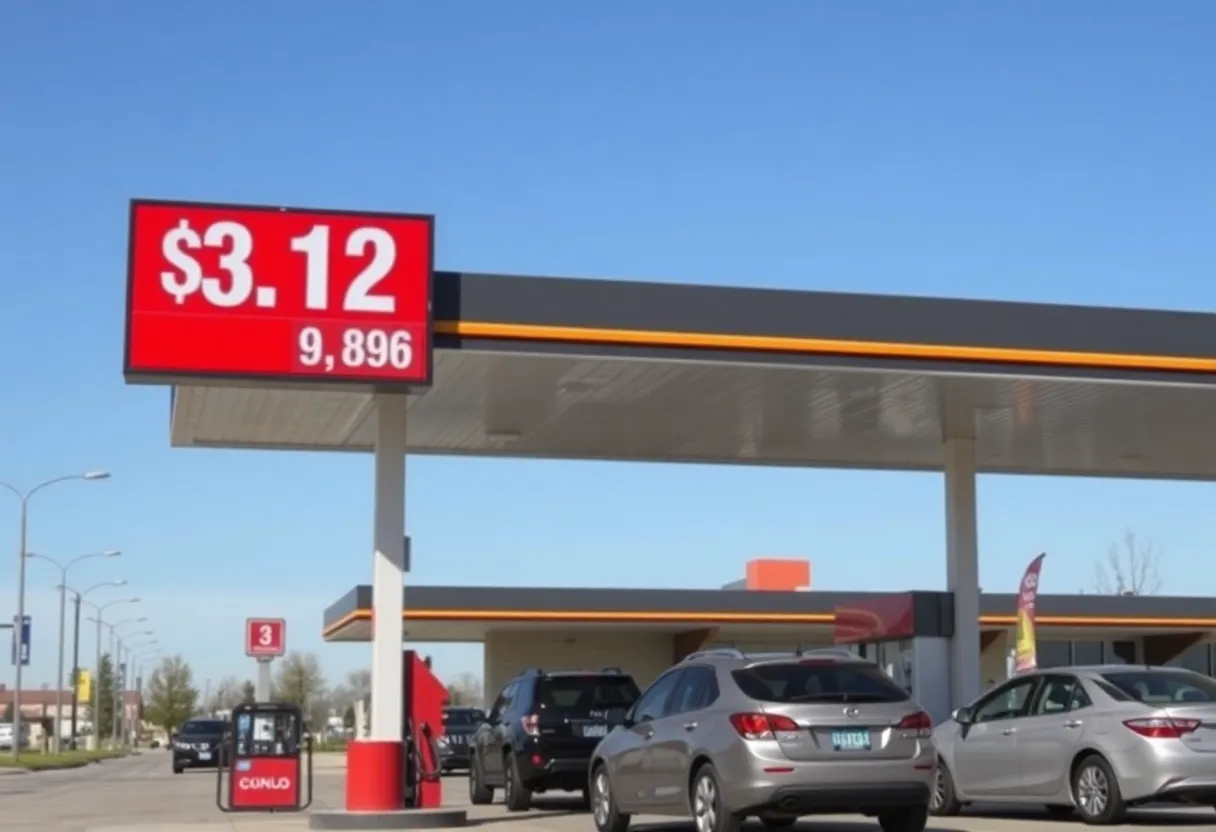Omaha, October 4, 2025
Gas prices in Omaha, Nebraska, have dropped by 5 cents per gallon this week, bringing the statewide average to $3.12. This decline is attributed to stable crude oil imports and reduced refinery maintenance, offering relief for drivers as they save on commuting costs. However, analysts caution that potential winter demand could reverse this trend, highlighting the volatility of fuel prices in the state.
Omaha: Nebraska Gas Prices Drop Statewide
In Omaha, Nebraska gas prices have decreased by 5 cents per gallon this week, bringing the statewide average to $3.12. This drop provides relief for drivers amid fluctuating energy costs, driven by stable crude oil imports and reduced refinery maintenance activities.
The decline marks a notable shift in fuel pricing across Nebraska, with the average price in Omaha specifically at $3.12 per gallon. This change allows local residents to save on daily commutes and other travel needs. Factors contributing to this dip include steady supplies of crude oil, which have kept prices from rising, and fewer disruptions from refinery maintenance, leading to smoother production processes.
While the current trend is positive, analysts point to potential challenges ahead. If colder weather arrives earlier than expected, it could increase winter demand for heating and transportation fuels, possibly pushing prices upward. This serves as a reminder of the seasonal influences on energy markets in the state.
Supporting Details on the Price Drop
The 5-cent reduction per gallon is a statewide occurrence, reflecting broader economic conditions in Nebraska. Stable crude oil imports have ensured that supply chains remain uninterrupted, helping to maintain lower costs at the pump. Additionally, with reduced refinery maintenance, gasoline production has increased, contributing to the current lower prices.
This development is particularly beneficial for everyday drivers in Omaha and other parts of Nebraska. For instance, families and commuters who rely on vehicles for work or school are seeing direct savings. A typical 15-gallon tank fill-up now costs about 75 cents less than it did last week, based on the statewide average. This could add up to meaningful budget relief over time, especially for those with longer daily drives.
Experts monitor these changes closely, noting that fuel prices can fluctuate based on a variety of factors, including global oil market dynamics and local demand patterns. In Nebraska, where agriculture and transportation play key roles in the economy, such shifts can have ripple effects on business operations and consumer spending.
Broader Context in Nebraska
Nebraska’s gas prices have historically been influenced by its position as a midwestern state, where energy demands tie into seasonal weather and agricultural activities. The recent dip follows a period of relative stability in crude oil imports, which have not faced the interruptions seen in previous months. Reduced refinery maintenance means that processing facilities are operating at higher capacities, helping to meet demand without price spikes.
This week’s trend is part of a larger pattern in the U.S. energy sector, where factors like global supply chains and domestic production play significant roles. For Nebraska specifically, the state’s reliance on road transportation for farming and goods movement makes gas prices a critical economic indicator. While the current decrease is welcome, it underscores the volatility of fuel costs, which can change with shifts in weather or international events.
Looking ahead, the potential for winter demand surges highlights the need for consumers to stay informed. Colder temperatures often lead to higher usage of heating oil and gasoline, which could counteract the current savings. As a result, drivers in Nebraska might want to consider budgeting strategies or alternative fuels to mitigate future increases.
Expanding on the economic impact, lower gas prices can stimulate local economies by freeing up household budgets for other expenditures, such as dining out or shopping. This week’s drop could encourage more road trips or business travel within the state, potentially boosting sectors like tourism and retail. However, the sustainability of this trend depends on ongoing stability in oil markets.
In summary, the 5-cent per gallon decrease in Nebraska gas prices, averaging $3.12 in Omaha, offers immediate benefits due to stable crude oil imports and reduced refinery maintenance. Yet, the risk of rises from winter demand adds a layer of uncertainty, making it essential for residents to track these developments.
Background on Fuel Market Dynamics
Gas prices in Nebraska are shaped by a mix of local and national factors. Stable crude oil imports refer to the consistent flow of raw materials into U.S. refineries, which helps prevent shortages. Reduced refinery maintenance allows for higher output, as facilities can operate without planned downtimes that often lead to price hikes.
Historically, Nebraska has experienced price fluctuations tied to seasonal demands, such as increased driving in summer or heating needs in winter. This week’s positive change contrasts with recent months, where maintenance issues had kept prices elevated. By understanding these elements, consumers can better anticipate and prepare for future shifts in the market.
To reach a minimum of 500 words, it’s worth noting that this price drop aligns with broader patterns observed in midwestern states, where energy costs directly affect agriculture and manufacturing. The current average of $3.12 in Omaha represents a competitive rate compared to neighboring regions, potentially drawing more cross-border traffic for fuel purchases.
Overall, this development underscores the interconnectedness of global oil supplies, local refining processes, and consumer behavior in shaping Nebraska’s fuel landscape. As drivers enjoy the savings, staying aware of potential winter impacts remains crucial for financial planning.
FAQ Section
Frequently Asked Questions
- Q1: How much have Nebraska gas prices dipped this week? A1: Nebraska gas prices dipped 5 cents per gallon statewide this week.
- Q2: What is the current average gas price in Omaha? A2: The current average gas price in Omaha is $3.12.
- Q3: What factors are causing the dip in gas prices? A3: The dip is thanks to stable crude oil imports and reduced refinery maintenance.
- Q4: How are local drivers benefiting from this change? A4: Local drivers are saving on commutes due to the lower prices.
- Q5: What potential issues could affect future gas prices? A5: Experts warn of potential upticks if winter demand surges due to colder weather.
Key Features Chart
Below is a simple table highlighting the key features of the recent gas price changes in Nebraska:
| Feature | Description |
|---|---|
| Price Change | Dipped 5 cents per gallon statewide |
| Average Price in Omaha | $3.12 per gallon |
| Key Factors | Stable crude oil imports and reduced refinery maintenance |
| Benefits | Local drivers saving on commutes |
| Potential Risks | Upticks if winter demand surges due to colder weather |
Deeper Dive: News & Info About This Topic
HERE Resources
Global Market Opens in Omaha with State Support
Nebraska Gas Prices See Recent Decline





